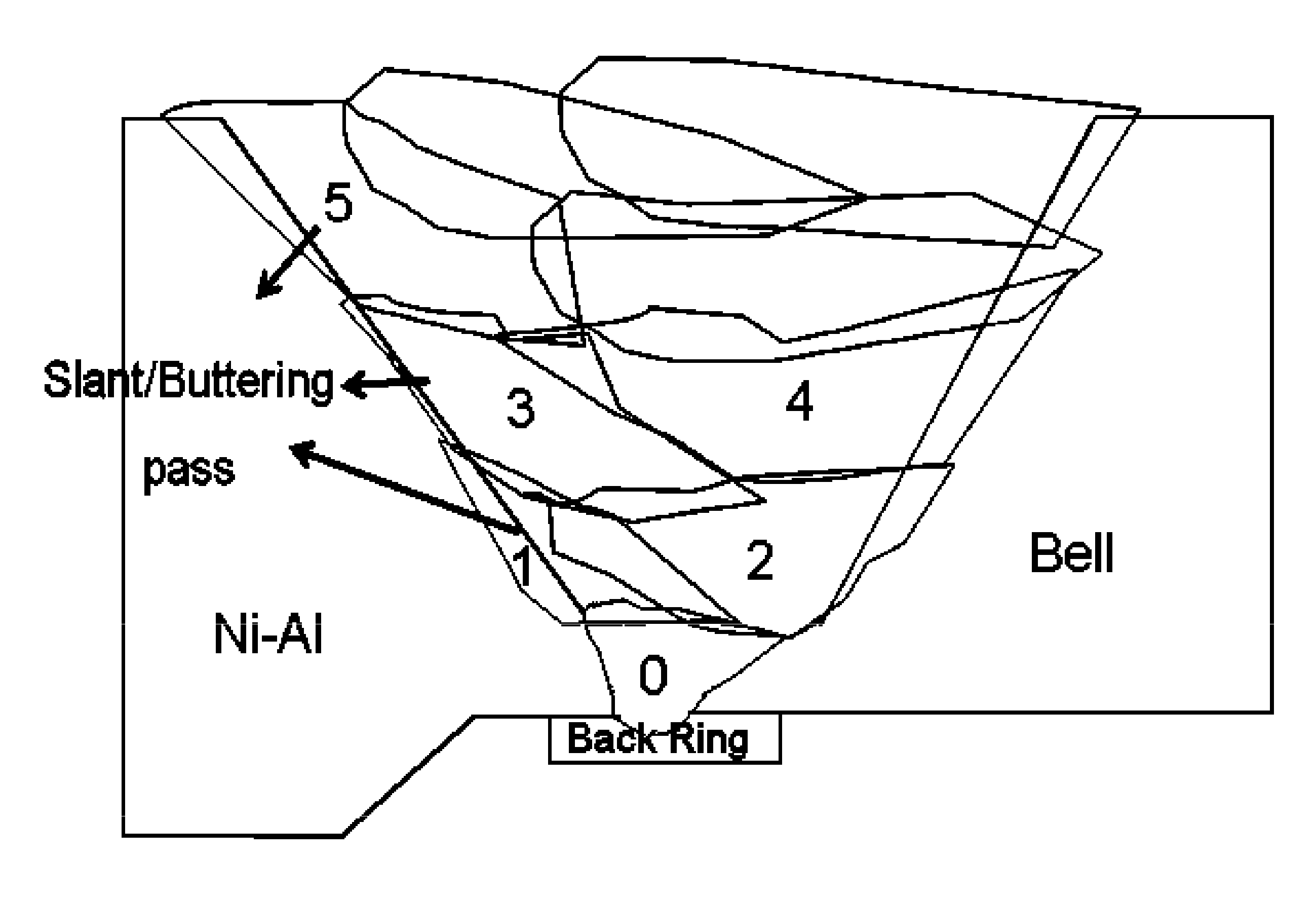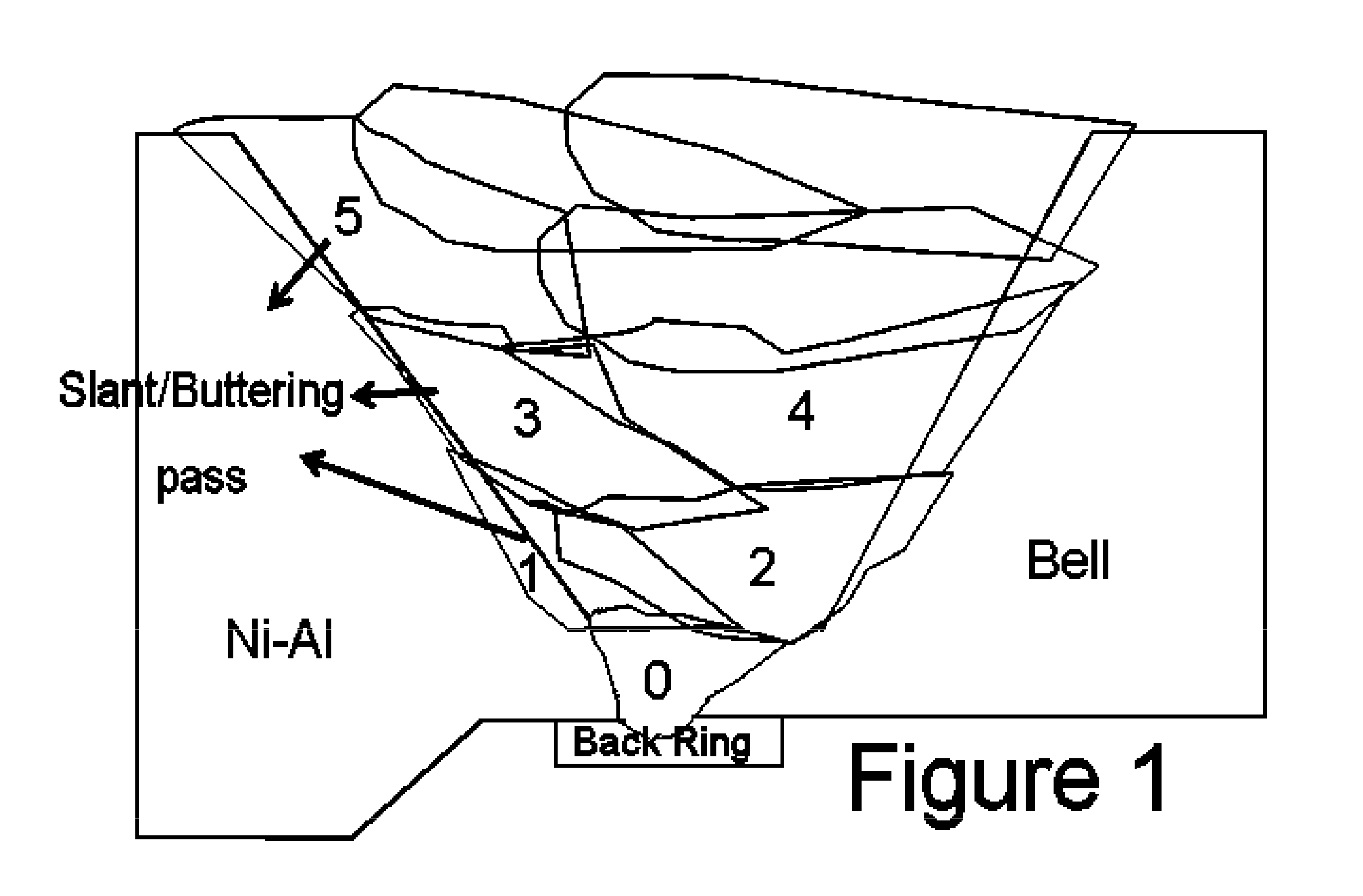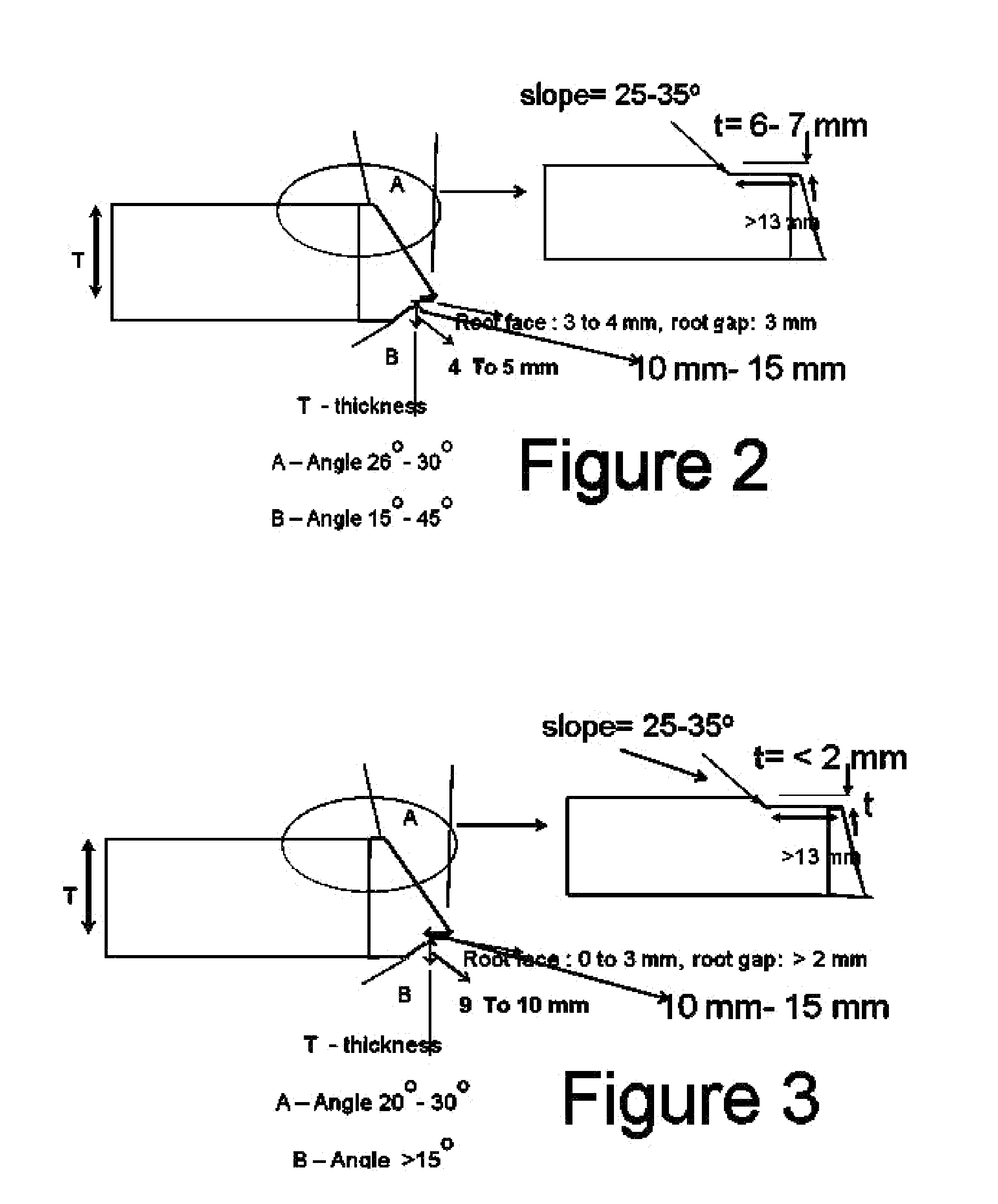Method of welding nickel-aluminide
- Summary
- Abstract
- Description
- Claims
- Application Information
AI Technical Summary
Benefits of technology
Problems solved by technology
Method used
Image
Examples
example
[0041]Three 0% Zr production sleeves were cast and welded with More-1 bells. To ensure sufficient root accessibility and penetration root pass was welded manually using 3 / 32″ diameter 2535 filler rod, 105 A welding current and all remaining filler passes were completed using parameters shown in Table 1.
TABLE 1Automatic GTAW parameters for fillerpasses of example production roll.Welding parametersValuesCurrent100 / 140 A (pulsing 50-50%)Voltage9.6 V (approx.)Pulse frequency1.8Pulse width50%Excursion (weaving)NoOut dwell time (weaving)NoIn dwell time (weaving)NoDown slope20Wire speed60 / 5 ipmWire retract time1.5 secFiller wire2535 RFiller wire size0.045″Wire delay3.0 secShielding gas100% ArShielding gas flow rate25-30 CFMClean & PeenYesHeat input20 kJ / inRoot gap⅛″ (23 mm)
[0042]The weld joints were subjected to DPE and radiography. The DPE results on root and cap passes showed no cracking and revealed small pores (<0.5 mm), but the radiograph revealed hair-line crack features along the tr...
PUM
| Property | Measurement | Unit |
|---|---|---|
| Temperature | aaaaa | aaaaa |
| Temperature | aaaaa | aaaaa |
| Temperature | aaaaa | aaaaa |
Abstract
Description
Claims
Application Information
 Login to View More
Login to View More - R&D
- Intellectual Property
- Life Sciences
- Materials
- Tech Scout
- Unparalleled Data Quality
- Higher Quality Content
- 60% Fewer Hallucinations
Browse by: Latest US Patents, China's latest patents, Technical Efficacy Thesaurus, Application Domain, Technology Topic, Popular Technical Reports.
© 2025 PatSnap. All rights reserved.Legal|Privacy policy|Modern Slavery Act Transparency Statement|Sitemap|About US| Contact US: help@patsnap.com



